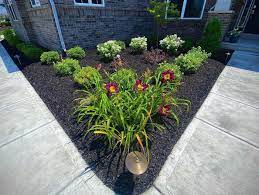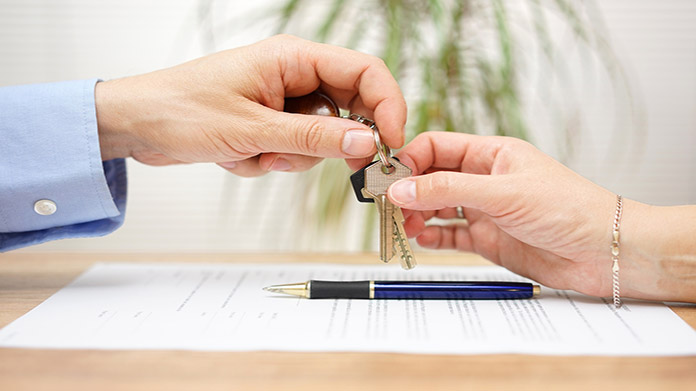
Keeping the yard at your rental property in pristine condition is a necessity. Overgrown lawns can be a problem for potential tenants and visitors. In addition, it can attract dangerous animals. Not taking care of your yard can lead to expensive repairs and fines from your local municipal government.
Keeping the front and back yards of your rental property well maintained can pay off in the long run. Renters will pay more to live in a property with a well-kept lawn. A well-kept lawn will add value to the property for the landlord.
Aside from the usual mowing and watering, your tenant might be required to fertilize, weed and mulch the lawn. You could even be asked to install a sprinkler system or an automatic timer.

While the landlord and the tenant may not agree on all the details, it is worth the effort to come to a common agreement. The cost of professional landscaping services can be costly for landlords. A local property management company might be able to help you with this matter. This will allow you to learn the most recent techniques and best practices.
As they have the experience and information necessary to assist you in this decision-making process, your landlord or property manager can help. You must make sure you are clear about all terms and conditions of your lease. You should also check the laws and ordinances in your state regarding this matter.
It is common to use native species for your lawn maintenance. Native plants are more likely than others to thrive in the local climate. They also require less fertilizer or pesticides. Your yard's overall appearance can be enhanced by adding fencing.
A lawn that is free of any debris and clean will help keep the critters away. The grass will stay greener if it is well-watered. It is also important to keep the area free from weeds and clean. This will reduce the risk of getting sick.

A professional might be the best option if you have multiple tenants or rent out multiple units. Professional companies will have the skills, equipment, and experience to provide a high-quality job. You might even be able to get a lower rent to pay for these services.
It is worthwhile to understand what the average tenant needs from their rental home. It is possible to keep your yard in tip-top shape and avoid costly damage by getting a better understanding about what you should do.
A well-maintained rental property will not only increase the value of your home, but it can also increase your chances of finding the right tenants. Landlords want tenants who are willing to take on additional chores. This can be achieved by taking a few moments to discuss your expectations and needs with a respected rental agency. A few simple changes to your yard can make a huge difference in curb appeal.
FAQ
Do I need to pay a handyman per hour or per project?
Personal preference is the most important factor. Some prefer to pay per hour so they can see the actual cost of their handyman. Others prefer to be paid for each job completed, since they may need multiple jobs at the same time. It doesn't matter which way you go, it works great.
What are the most frequent handyman repairs that you need to make?
Handymen commonly repair damaged roofs, windows, doors, gutters, siding, decks, fences, sheds, hot water heaters, air conditioning units, and electrical systems. Handymen can assist homeowners who need help building or renovating their homes.
What's the difference between a handyman or a carpenter, you ask?
Handymen can be hired to help with a variety of projects such as painting, plumbing and electrical installation, cabinet making, flooring, tile, kitchen remodeling, furniture assembly, and cabinet repair. Carpenters specialize in woodworking. They are skilled in building cabinets, doors and windows, as well as decks, roofs, fences and sheds.
Statistics
- With a strong housing market, the handyman and general maintenance worker industry are expected to grow by nearly 10% in the next decade. (housecallpro.com)
- An estimate was that in 2003, the market for home maintenance and repair spending was up 14% 2001 to 2003. (en.wikipedia.org)
- A franchise was approximately $110,000 with a franchise fee of $14,900, according to a spokesperson for a national handyman franchise. (en.wikipedia.org)
- According to the U.S. Bureau of Labor Statistics, in May 2020, there are 1,357,630 handymen employed in the U.S.. (angi.com)
- “Before the pandemic, 40% of people asked how we could estimate a job when we weren't there,” Rose recalled. (inquirer.com)
External Links
How To
How to Replace Broken Tiles
Step 1: Remove the old tiles.
You can remove the old tiles from your floor and save them. These tiles will be useful later on, so you'll need to keep them intact. If they're damaged or missing pieces, note which ones they were so you don't run into problems finding replacements.
Step 2 - Choose New Tiles
Look at these different options for replacing tiles.
-
You should find a similar tile to the one that you've just taken out.
-
To find the matching piece, use the measurements that you took while removing the tile. This will make it easy to get the correct size without having again to measure.
-
Consider looking for colors, patterns, textures and sizes in a variety of shapes and colors.
-
Consider which grout you would like to use, if any. Some people like a consistent color while others prefer mixing it.
-
Choose a tile that resists moisture.
-
Finally, consider the placement of your new tile -- you can save time and money by ensuring the area you're installing it in has enough space for proper installation.
-
After you've selected your tile, place your order online or at your local Lowe's shop.
Step 3 - Place the tiles.
You can install new tiles in the same way you did before. It is important to align them correctly so they fit together properly.
Step 4 - Clean up
Make sure to clean up all debris and other materials before applying the final layer of protection material.
This will prevent dust and dirt from building up between the tiles.
Step 5 -- Sand the Floor
Clean everything and sand the floor.
Step 6 – Finish Off
Once the floor has been completely smoothed, apply the protective coatings on the tiles. You should wait until this stage as wet paint can stain new tiles.
Remember, you can always use a product called "damp-and-dry" on your floors to help protect against stains.
It won't solve every problem after your tiles are installed. You might want to add an anti-slip coating to the protective layer if there are a lot of children.
Finally, do not forget to keep the protective sealer on for several more weeks before you move back into your home.